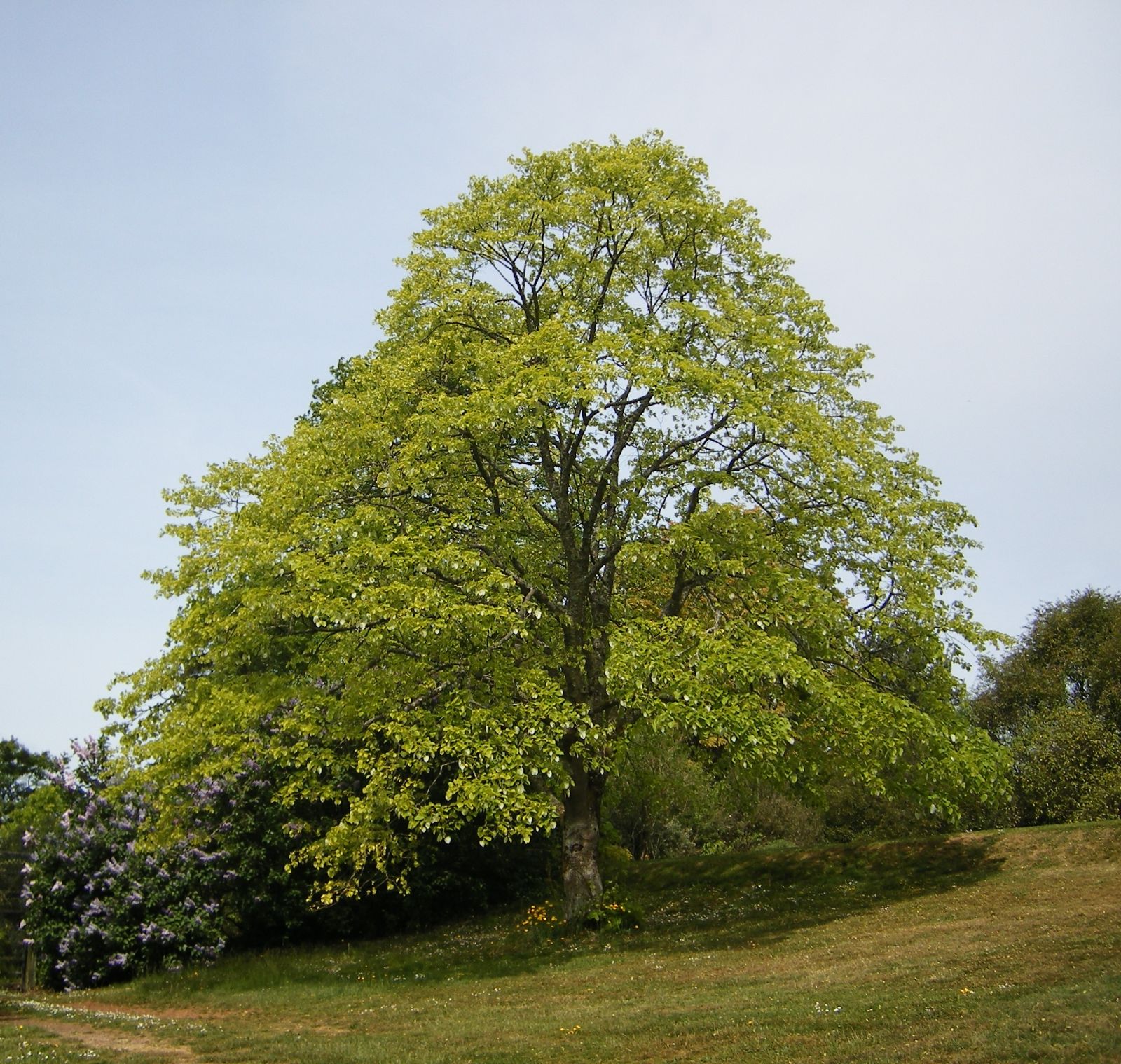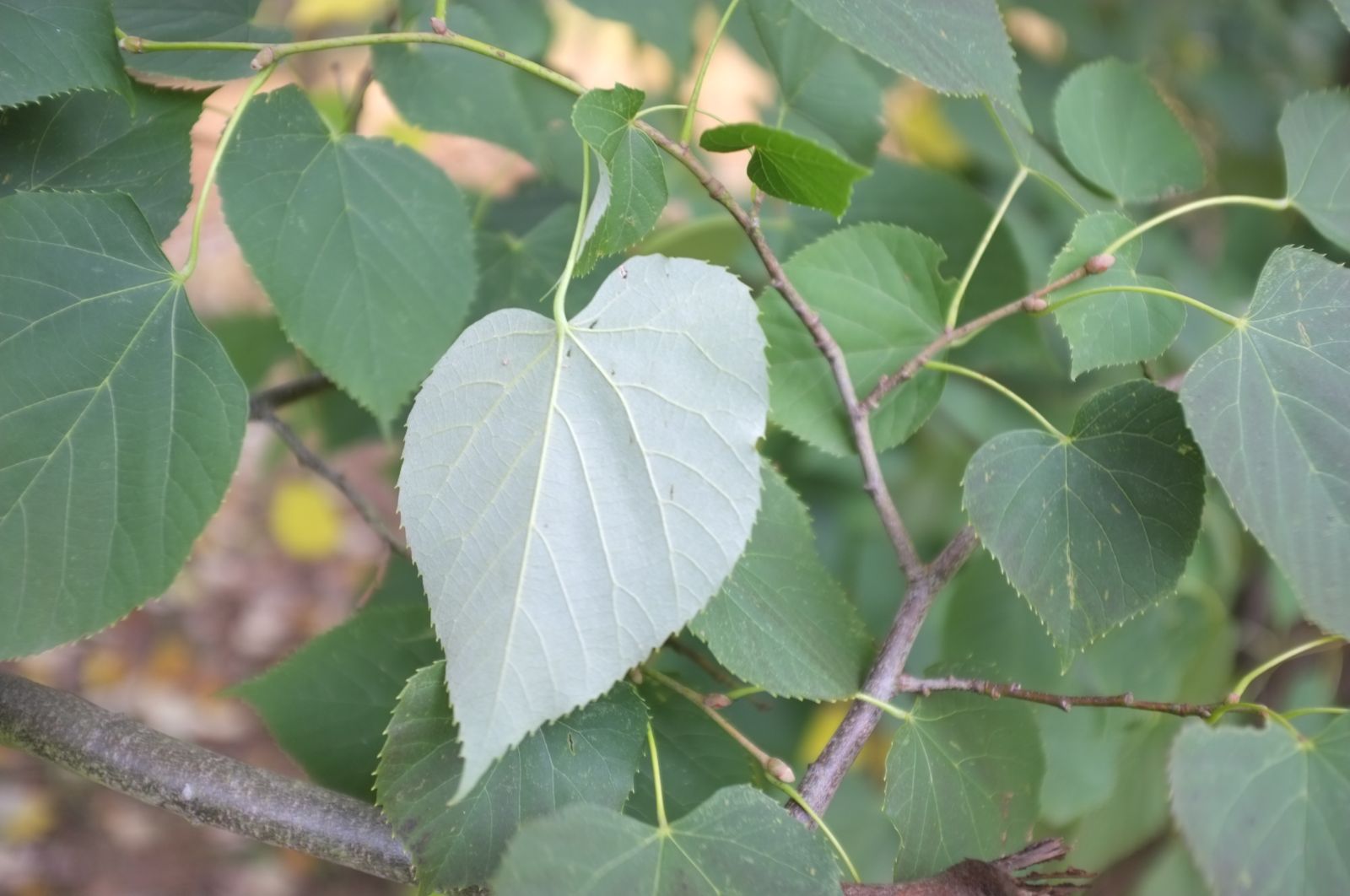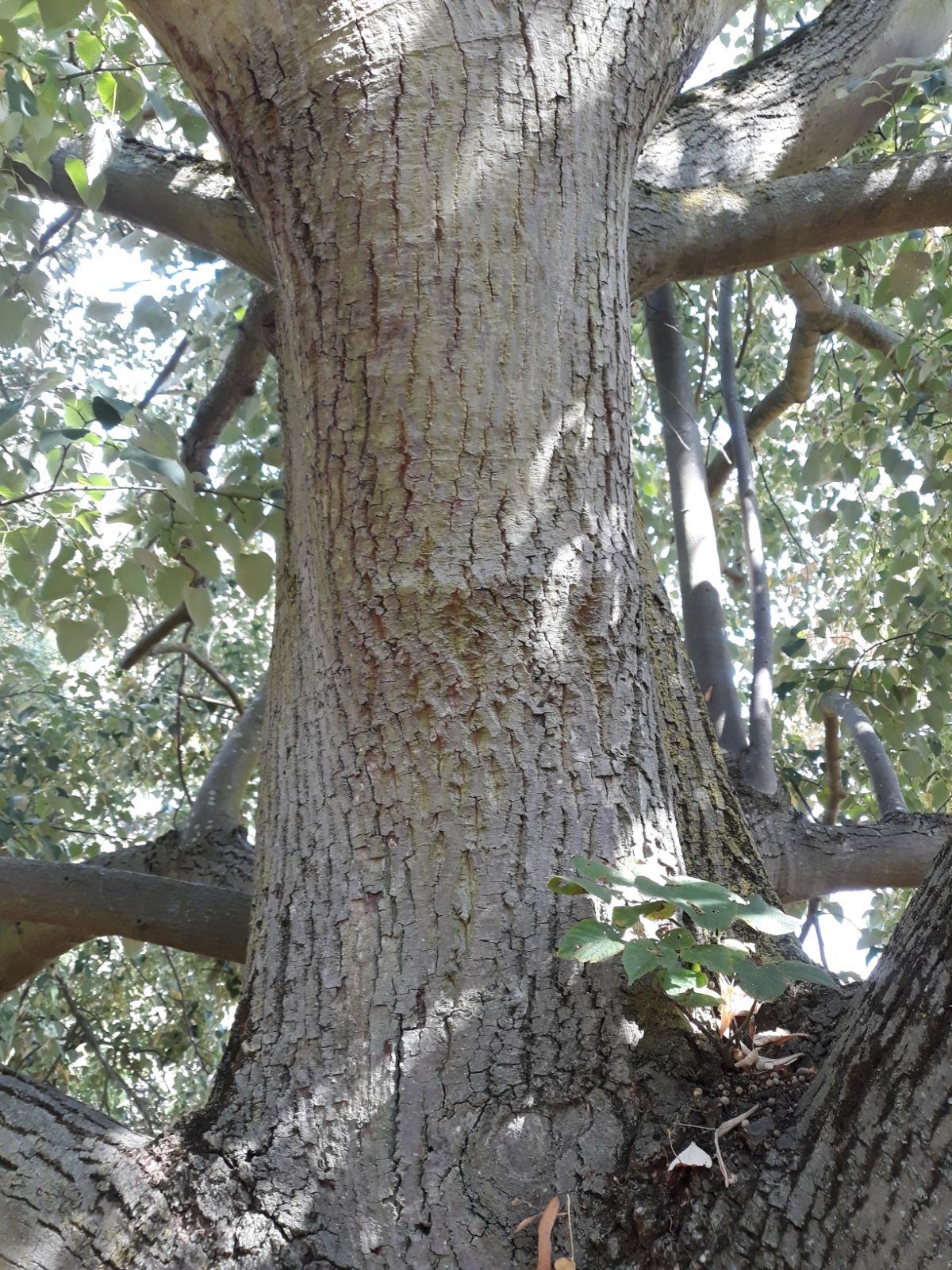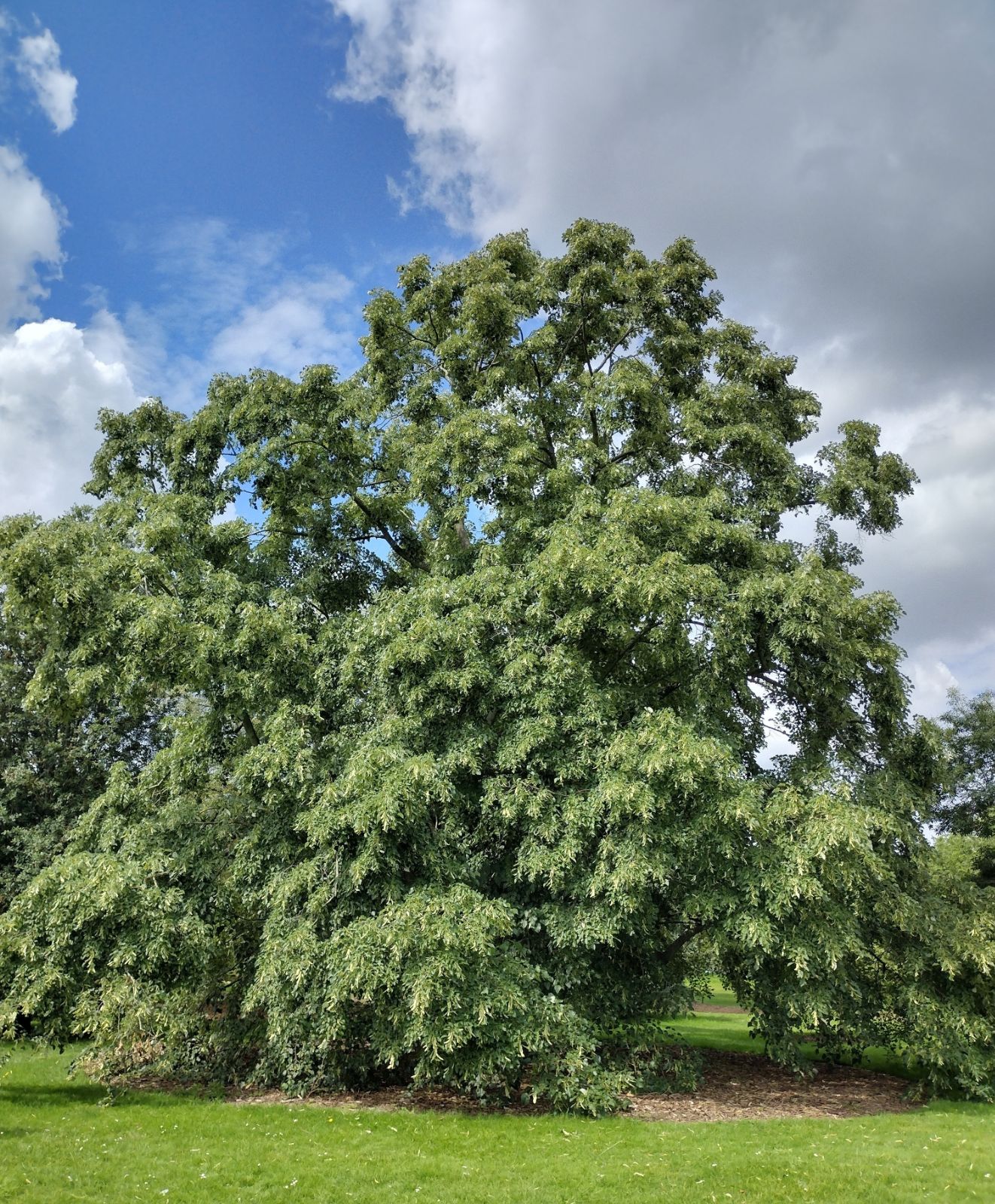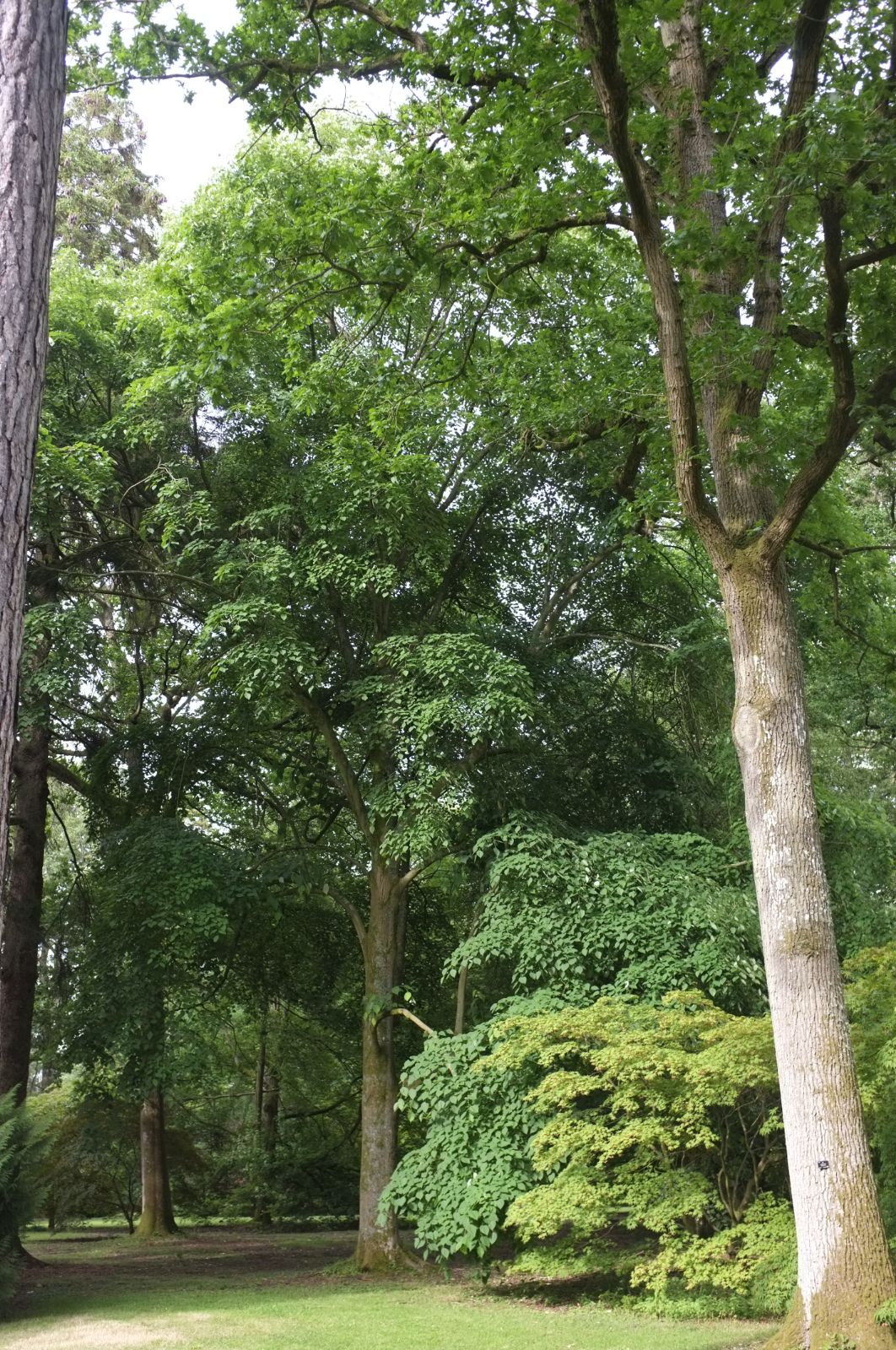Tilia oliveri
Sponsor
Kindly sponsored by
a member of the International Dendrology Society
Credits
Owen Johnson & Julian Sutton (2020)
Recommended citation
Johnson, O. & Sutton, J. (2020), 'Tilia oliveri' from the website Trees and Shrubs Online (treesandshrubsonline.
Genus
Common Names
- Oliver's Lime
- Oliver's Linden
Synonyms
- Tilia pendula V. Engler, not Rupr. & Maxim.
Infraspecifics
Other taxa in genus
- Tilia americana
- Tilia amurensis
- Tilia callidonta
- Tilia chinensis
- Tilia chingiana
- Tilia concinna
- Tilia cordata
- Tilia dasystyla
- Tilia endochrysea
- Tilia × euchlora
- Tilia × europaea
- Tilia × flaccida
- Tilia × flavescens
- Tilia Hanwell Hybrids
- Tilia 'Harold Hillier'
- Tilia 'Harvest Gold'
- Tilia × haynaldiana
- Tilia henryana
- Tilia japonica
- Tilia × juranyana
- Tilia kiusiana
- Tilia mandshurica
- Tilia maximowicziana
- Tilia miqueliana
- Tilia mongolica
- Tilia nobilis
- Tilia × noziricola
- Tilia paucicostata
- Tilia platyphyllos
- Tilia tomentosa
- Tilia tuan
- Tilia 'Westonbirt Dainty'
Tree to 26 m tall. Bark light grey; shallow longitudinal fissures develop by 100 years. Twigs slender (1.5–3 mm thick), green or red-tinged, with patches of white stellate pubescence. Buds large (9 mm long), with one scale visible and a small part of a second, usually glabrous and shining. Leaves 5–11 × 5–10 cm; marginal teeth well-spaced and asymmetric, with a pale mucronate tip 0.3–1.1 mm long; upper surface mid-green, glabrous; lower surface densely covered with a white tomentum of stellate hairs which have mostly 8 or 16 arms. Floral bracts large (6–11 × 0.9–2.5 cm), almost stalkless, pale green with white stellate tomentum on both surfaces. Inflorescence drooping, compact, with 7–20 flowers. Staminodes present. Fruits 9–14 × 7–10 mm, ellipsoidal, strongly mamillate, densely covered with a brown tomentum; wall thick and not breakable between fingers (Tang et al. 2007; Pigott 2012).
Distribution China Gansu, Hubei, Hunan, Shaanxi, Sichuan
Habitat Mountain forests.
USDA Hardiness Zone 6
RHS Hardiness Rating H5
Conservation status Least concern (LC)
At least in the forms familiar in Western collections, the undersides of the leaves of Tilia oliveri are densely covered in stellate hairs, which are the most brilliant white. Although in some ways it is a shame that the plant waits until the very end of spring before opening them, this at least reduces the risk of damage from late frosts. The large floral bracts in mid-summer, white-hairy on both surfaces, are also perhaps the showiest of the genus. A member of Section Astrophilyra, it was first described from specimens collected on the Hubei-Sichuan border by Augustine Henry in 1889. Szyszylowicz’s specific epithet, honouring the Kew botanist Daniel Oliver, was published in 1890, the year of Oliver’s death.
Oliver’s Lime was introduced to Western cultivation by Ernest Wilson, through a collection (W. 705) made for the Veitch nursery in 1900, in Western Hubei (Sargent 1916; Bean 1981). The tree thrives in the UK climate, rapidly forming the even dome common to many lime species. The champions, in the Westonbirt National Arboretum, are two trees both 25 m, dbh 70 cm in 2014, by Specimen Avenue and Pool Avenue, the latter planted in 1943. Another mature tree of 12 m, dbh 66 cm is one of the exciting public plantings in Scarborough’s Peasholm Park on the North Yorkshire coast (Tree Register 2018). An example at Riverhill Park in Kent is festooned in wild mistletoe (Viscum album), a parasitic plant sometimes seen abundantly on T. × europaea. Most of the younger Oliver’s Limes in Britain were propagated by Hillier and Sons from a tree (derived from the original Wilson introduction), which still survives in suburban Winchester, on the small green at the end of Nursery Gardens, on the site of Hillier’s West Hill Nursery (Pigott 2012; Tree Register 2018). Another from this introduction has formed a magnificent specimen at Kew Gardens, growing near the Princess of Wales Conservatory. The species is now readily available in the European nursery trade, though genetic diversity may be low.
Tilia oliveri is recorded from several collections in Belgium and Germany, including Meise Botanic Garden, which has a tree of Hillier provenance dating from 1982, and the Botanischer Garten Bonn (Meise Botanic Garden 2020; Botanische Gärten der Universität Bonn 2020). In North America it remains a rare tree and is scarcely or not at all available commercially. The Arnold Arboretum, Massachusetts received material of W 705 stock from Veitch in 1907, and in subsequent years other Wilson collections and cultivated material. Curiously, nothing remains at the Arnold from these introductions (Arnold Arboretum 2020). The species is recorded at the Morton Arboretum, Illinois and the JC Raulston Arboretum, North Carolina (Morton Arboretum 2020; JC Raulston Arboretum 2020).
Hers 2808
The Belgian railway engineer turned botanist, Joseph Hers, collected a selection of interesting limes in 1919 from a site he called ‘Huang Zang Yu’, which will have been on the border of Jiangsu and Anhui provinces in eastern China. His herbarium specimens have been identified by Pigott (2012) as Tilia concinna and T. miqueliana, plus one (Hers 2808) that was possibly a hybrid of T. miqueliana with T. concinna, or, based on foliage characters, with T. oliveri. Hers also collected fertile seed from this last tree, from which a specimen at the Sir Harold Hillier Gardens, Hampshire is believed to have been grown. Grafts from this survive at the Sir Harold Hillier Gardens and at Lord Heseltine’s arboretum at Thenford House in Northamptonshire – a tree described by Pigott (2012) as ‘apparently T. oliveri’. It lacks the brilliant white underleaf of the best Oliver’s Limes in Britain and, as is often the case with grafted limes, has made a rather poor and shapeless plant, 8 m, dbh 22 cm in 2009 (Tree Register 2018). Grafted material has been offered commercially in Britain (as Tilia aff. oliveri) by Pan-Global Plants: Nick Macer describes it as ‘an elegant thing with heart shaped foliage, grey under, on a crown of sweeping, semi-weeping branches’ (Pan-Global Plants 2020).

